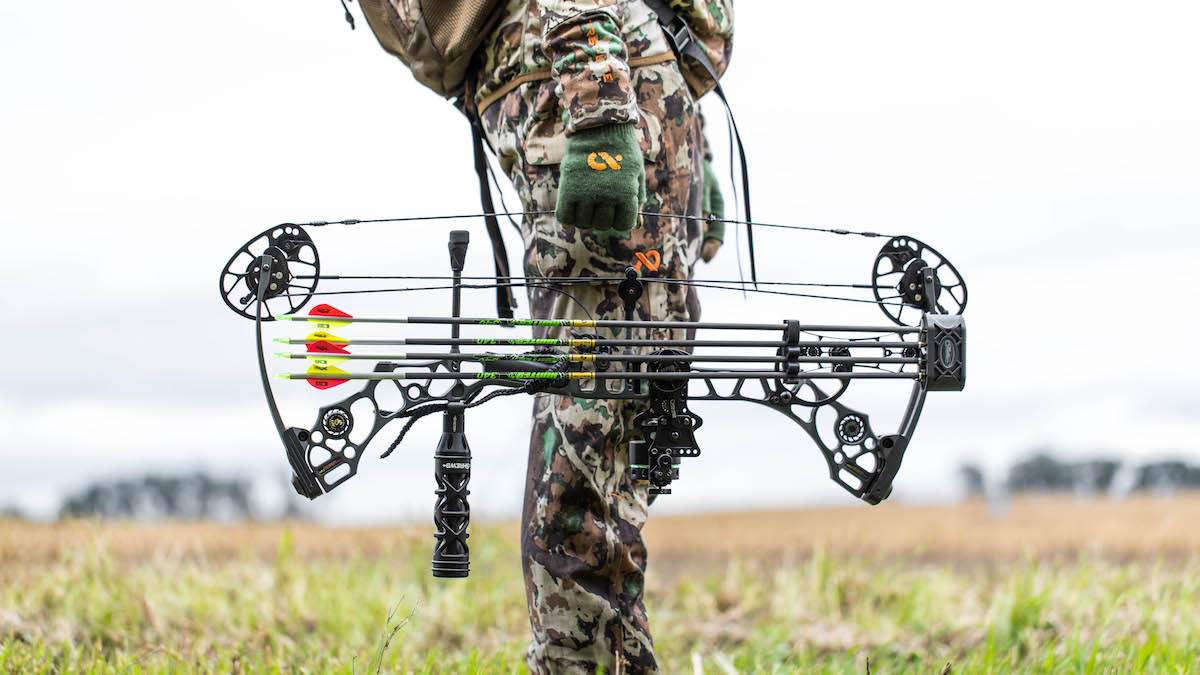
Consistent bow accuracy is a puzzle that requires fitting a lot of odd-shaped pieces together. Bow fit and comfort are like the corner pieces that create the frame for filling in the rest.
These two factors, not coincidentally, are where a lot of bowhunters go wrong. A bow that doesn’t fit correctly, whether a new $1,500 rig or a cheap garage sale find, is going to promote poor form and reduce not only overall accuracy, but enjoyment of the shooting process as well.
When it comes to buying a new bow, especially from a pro shop, this should never be an issue because it should be set up to your specs. A used bow can be a vastly different story, particularly if you don’t buy it from a reputable source.
Here’s what you need to know if you’re going to buy a used bow outside the comfortable confines of your local pro shop.
Buy Gently Used
If you’re not interested in dropping serious coin on a bow but still want an upgrade or are looking to get into the archery game for the first time, there are quality options on the used market. There’s a small subset of the bowhunting population who can’t stand not having the latest, greatest new bow right when it comes out, and their used bows often boast low mileage and plenty of TLC.
There’s also a fair supply of bows on the used market from folks who believed they’d get into bowhunting, but ran for the hills when they figured out that killing a mature buck requires repetitive failure and a lot of time commitment. So, they move on to other pursuits—but not before recouping some of the cost of their archery dabbling.
Then there are the bows hanging on the garage walls and stashed on dusty shelves in basements all across the country. In any case, the used bow opportunity is real and can be a cost-effective way to get in the game.
That’s the upside. On the other hand you could end up buying a total piece of crap and ruining any chance of hitting a deer or having any fun at all.
A severely out-of-tune bow looks an awful lot like a perfect tack driver, which means if you’re entertaining the thought of buying a used rig anywhere other than a trusted pro shop, see if you can take it in for an inspection from someone who knows bows. They’ll be able to tell you what it’ll cost to get it spruced up, or if there is something majorly wrong like a cracked limb, bent cam, or other issues that might require major attention.
Cost Versus Value
The main benefit of shopping for a used bow is cost, but this cash saving thought process can end up backfiring like it might for a first-time buyer on the stock market. A new investor might look at the price of the individual stock versus the value of the company. A $1.00 share price for some up-and-coming tech company might seem like a screaming deal, while another more established, revenue generating machine might be more intimidating at $500 a share. One looks cheap and the other expensive, but one is a gamble while the other is a proven winner.
With bows, you have to be careful about trying to save money to the point where you sacrifice performance. This goes for hand-me-downs as well. While the cost might be just right, the value to you as a bowhunter can be zero. In either case, ridiculously cheap (or free) bows, are priced so for a reason. Do a little internet sleuthing on the rig you’re looking at so you understand if the price is in line with market value or if there are any red flags that warn you off a potential purchase.
Bow Specs
Forget arrow speed, kinetic energy, and the other highlights you’re likely to hear about in marketing speak when it comes to bows. For the used-bow shopper, fit is everything. If a bow doesn’t match your draw length and isn’t adjustable to a comfortable draw weight, you need to pass. Nothing will cause you more shooting headaches than a draw that is too short or too long.
When it comes to draw weight, too light is better than too heavy. But really, you want a bow that not only meets your state’s minimum requirements, but one you can also draw straight back without any exaggerated motion. If you have to sky-pull it or you struggle to break over, the draw weight is too much. If you can’t back it down any lower because it’s already at the bottom end of the range, then you’re essentially shooting the archery version of the big game rifle with a recoil so violent it produces pre-shot wincing and even a few tears at the range.
Again we return to pro shops and the advice they offer. If the bow you’re interested in can’t be tuned or can’t be adjusted to fit you, it’s not a good deal no matter how cheap. Consult with trusted pros and when you do make a purchase, whether in their shop or online, reward them with your post-purchase business. You’ll be happy you did, because not only will you get a used rig that works for you, but you’ll get follow-up advice on form, accessories, and all of the other things that complete the puzzle.
But first, make sure you get those corner pieces squared away.
Feature image by Captured Creative.






Conversation